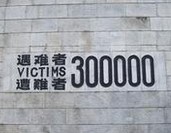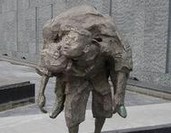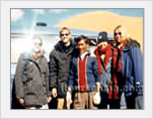
Nanjing Massacre Memorial Hall Guide
-Travel to Nanjing Massacre Memorial Hall In 1937 and 1938, Nanjing was witness to one of worlds haunting events, being the massacre of some 300000 people at the hands of invading forces. At that time Nanjing was the capital of China and Japanese forces had taken control of the city and during the first six to eight weeks of their occupation had performed indescribable atrocities. ?t ?s located ?n the southwestern corner of Nanjing known as Jiangdongmen, near a site where thousands of bodies were buried, called a "pit of ten thousand corpses" .
In 1937 and 1938, Nanjing was witness to one of worlds haunting events, being the massacre of some 300000 people at the hands of invading forces. At that time Nanjing was the capital of China and Japanese forces had taken control of the city and during the first six to eight weeks of their occupation had performed indescribable atrocities. ?t ?s located ?n the southwestern corner of Nanjing known as Jiangdongmen, near a site where thousands of bodies were buried, called a "pit of ten thousand corpses" .
 It was built in 1985 by the Nanjing Municipal Government in memory of the 300,000 victims who lost their lives during the Nanjing Massacre. In 1995, it was enlarged and renovated. The memorial exhibits historical records and objects, and uses architecture, sculptures, and videos to illustrate what happened during the Nanjing Massacre. It occupies a total area of approximately 28000 square meters, including about 3000 square meters of building floor space.
It was built in 1985 by the Nanjing Municipal Government in memory of the 300,000 victims who lost their lives during the Nanjing Massacre. In 1995, it was enlarged and renovated. The memorial exhibits historical records and objects, and uses architecture, sculptures, and videos to illustrate what happened during the Nanjing Massacre. It occupies a total area of approximately 28000 square meters, including about 3000 square meters of building floor space.
 The memorial consists of three parts: the outdoor exhibits, the remaining bones of the killed and the museum for historical material displaying. In the outdoor sector, group sculptures, full-length statues, relief carvings, signboards, monuments, redeeming and repentant tablets, withered trees and broken walls as well as a wall carved with the names of part of the victims so far that have been located cluster together with green shrubs and lawns to suggest a graveyard-style architecture with the themes of life and death, grief and indignation. A building shaped like a coffin is to shelter some of the victims’ bones excavated from the “pits of thousands of bodies” right in the site when the memorial was in construction-an iron evidence for the bloody crimes committed by the aggressive Japanese troops. The museum lies half buried in the ground like a colossal tomb. Inside, an immense collection of pictures, objects, charts and photographs relate the horror of the Rape of Nanjing. Through a versatility of means for exhibitions such as lighted cabinets, sand trays, clay moldings, oil paintings, micro-computers appliances, documentary shows and so on, the tragedy of the cruel holocaust in Nanjing and the beastly atrocities of the Japanese militarists are pictured and recounted.
The memorial consists of three parts: the outdoor exhibits, the remaining bones of the killed and the museum for historical material displaying. In the outdoor sector, group sculptures, full-length statues, relief carvings, signboards, monuments, redeeming and repentant tablets, withered trees and broken walls as well as a wall carved with the names of part of the victims so far that have been located cluster together with green shrubs and lawns to suggest a graveyard-style architecture with the themes of life and death, grief and indignation. A building shaped like a coffin is to shelter some of the victims’ bones excavated from the “pits of thousands of bodies” right in the site when the memorial was in construction-an iron evidence for the bloody crimes committed by the aggressive Japanese troops. The museum lies half buried in the ground like a colossal tomb. Inside, an immense collection of pictures, objects, charts and photographs relate the horror of the Rape of Nanjing. Through a versatility of means for exhibitions such as lighted cabinets, sand trays, clay moldings, oil paintings, micro-computers appliances, documentary shows and so on, the tragedy of the cruel holocaust in Nanjing and the beastly atrocities of the Japanese militarists are pictured and recounted.
More Attractions in Nanjing
Your Question & Quick Answer*We welcome and appreciate your questions & reviews
Booking Procedures | Terms & Conditions | Payment Methods | Links | Site Map | About Us | Contact Us | Travel Agent
Copyright 2008, All rights reserved.. itourbeijing.com professional china travel guide and china travel service
TEL: 86-10-85711972 (Universal) 1-888-288-9328 (North America) E-mail: contact@itourbeijng.com
Tours Index | China Tours | Beijing Tours | Xi'an Tours | Shanghai Tours | Guilin Tours | Tibet Tours
China Travel | Beijing Travel | Shanghai Travel | Xi'an Travel | Guilin Travel |Beijing Map
China Golf | Beijing Golf | Shanghai Golf | Xiamen Golf | The Great Wall Travel | Yangtze Cruise | Travel Picture



